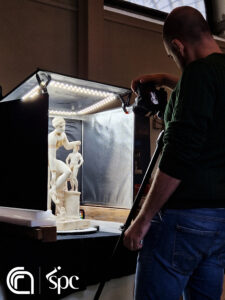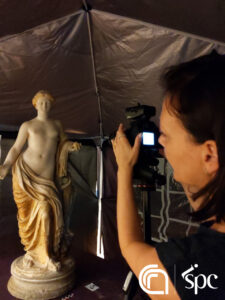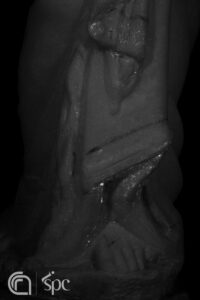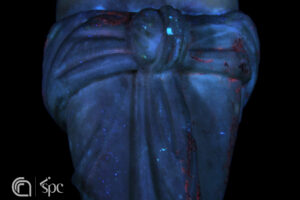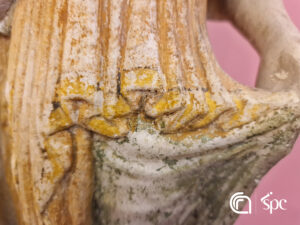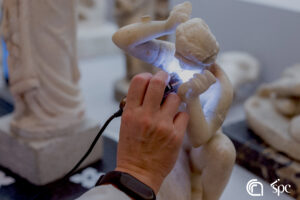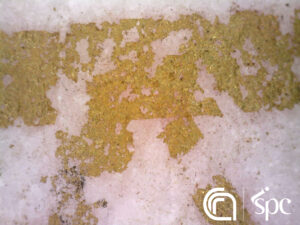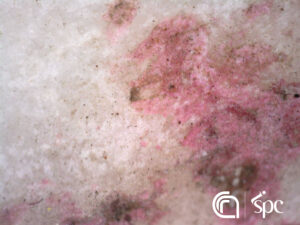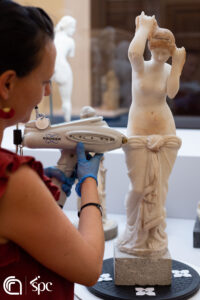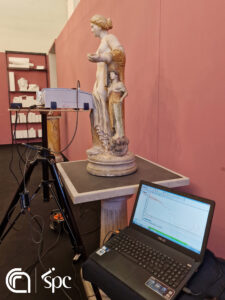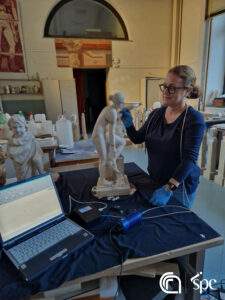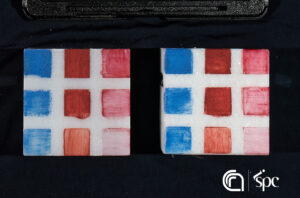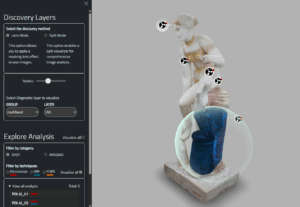Scenario 1
Disappearing or Lost Polychromy
This first scenario addresses the problem of loss polychromy in classical statuary. Archaeological museums often house collections of statues and architectural elements that were originally colored. Unfortunately, only microscopic traces of these colours remain, and what is left requires careful preservation.
While a complete reconstruction of their original appearance is challenging, institutions believe it is crucial to offer a correct understanding. This helps to train visitors’ eyes to recognize the original polychromy, preventing misunderstandings. The reliability of digital reconstructions and the authenticity of the resulting digital experiences are crucial. The process of reconstructing lost polychromy is a complex, interdisciplinary endeavour that combines a wide range of analytical techniques with historical and archaeological research. This integrated approach ensures that the hypothetical reconstructions are not speculative but are grounded in tangible evidence.
Despite the lack of a common protocol for investigating and preserving ancient polychromy, the PERCEIVE project aims to develop a shared methodology that uses Image Processing Methods (IBM) and Machine Learning approaches (AI) to significantly accelerate the study of colour traces on ancient artifacts. The aim is to obtain, when possible, reliable reconstruction hypotheses of the original polychromy and, when data are not sufficient, to communicate to the general public, the scientific process behind the study of residual polychromy. The twofold goals are to train visitors’ eyes to recognize these subtle colour remnants, enhancing their knowledge and understanding of ancient art. By fostering a sense of wonder for these artworks, the aim is to instil a sense of care and civic responsibility, all while upholding the authenticity of the original collections and the visitor experience.
Today, there is a strong need to extend civic participation beyond the museum walls. By developing a new Open Museum concept, we aim to involve citizens in the discovery process, with access to information from home and on the street. This approach seeks to make the study of ancient art more accessible and engaging for everyone.
Case Studies
Two case studies belonging to the MANN collection have been selected:
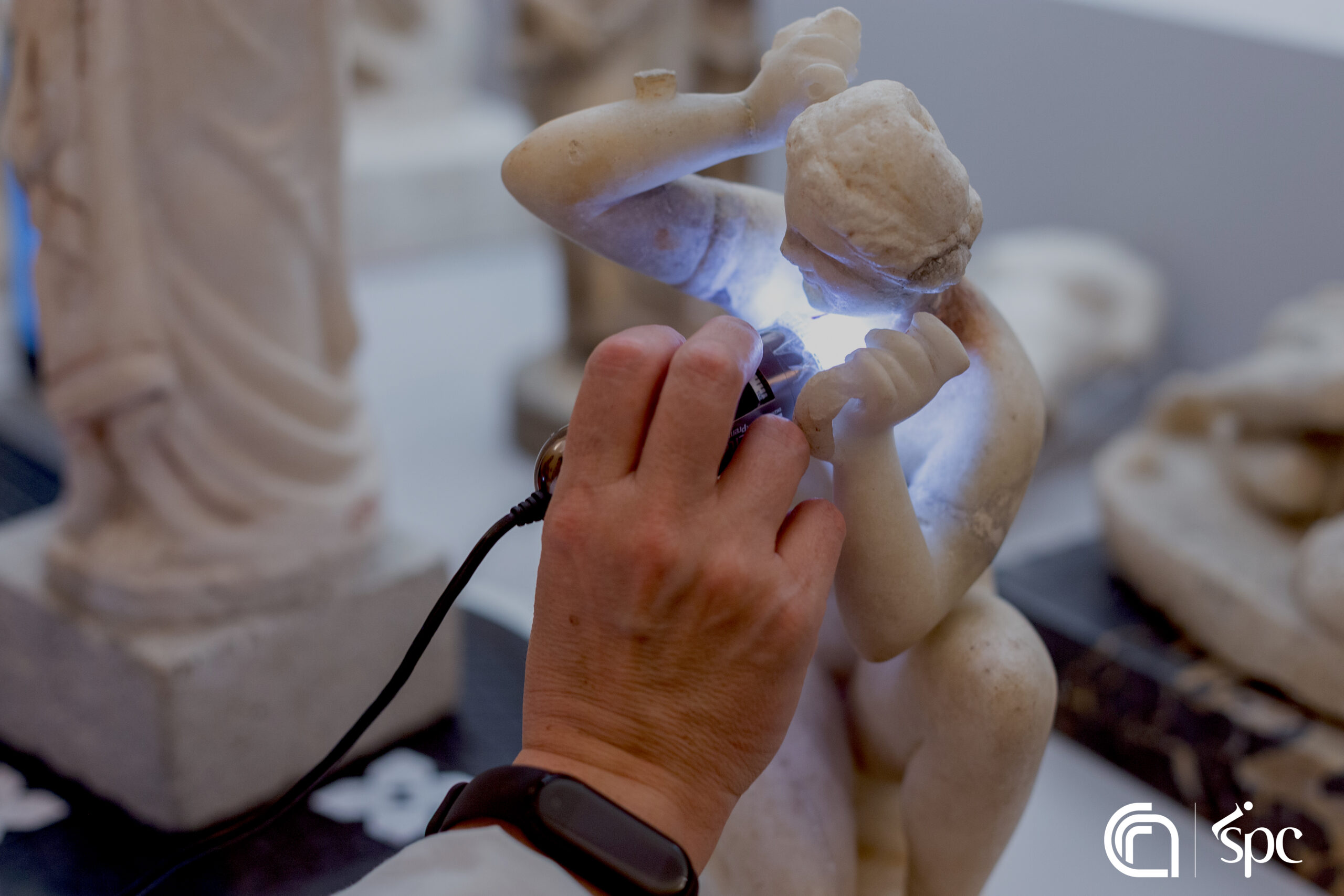
Venus Anadyomene
A group of marble statues representing the famous iconography of “Venus Anadyomene” (from Greek, “Venus Rising from the Sea”), the Goddess of love, has been selected as case study. The theme of feminine goddess allows us to consider additional statues whose polychromy is very well preserved, such as NR 109608 Lovatelli Venus and NR 152798 Bikini Venus.

Isis Complex in Pompeii
This complex, whose reconstruction would be carried out through the relief of architectural structures but also through the virtual replacement of fragments of frescos that decorated the walls of the temple and of statues excavated in the Temple and currently exhibited in the MANN collection. Among the statues recovered from the excavation, the following statues have been selected: NR 6298 Venus Anadyomene; NR 976 Isis with sistro; NR 6290 Isis head; NR 6312 Dionysus with panther.

